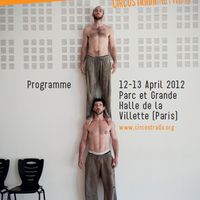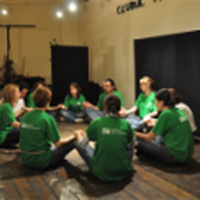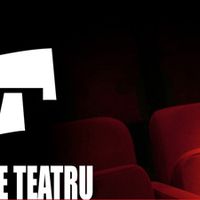Talking about contemporary circus in Europe
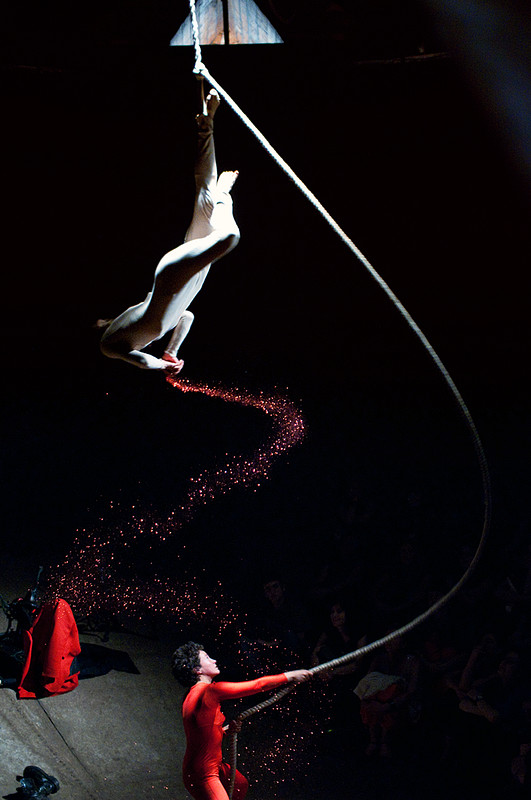 [caption id="attachment_1325" align="alignright" width="179" caption="www.undergroundfestival.ro"]
[caption id="attachment_1325" align="alignright" width="179" caption="www.undergroundfestival.ro"]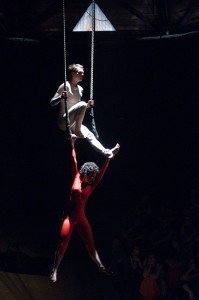 [/caption]
[/caption]My first memories of the performing arts go back to a little town near the amazing Danube Delta - my hometown. Fifteen years ago, it hosted the Globus Circus tour from the capital of Romania, Bucharest. Even if the main colours of the communist regime period were grey and brown, I still have colourful memories from that night at the circus: the stage was full of animals, performers and acrobats dressed in light red and green, all was intended to be full of joy, light and music. In fact, the acrobats had poor training, their costumes were old and readapted, the animals were poorly taken care of, nevertheless, the show was a form of entertainment that enlightened our days back then.
Years passed and my work began to be primarily theatre related. Then one day I came across the shows of Cirque du Soleil. The first show I watched was Alegria in Rome, where I was amazed by the high level of the music, singing, dancing, acrobatics, aerial acts, all as one, merged into one form of art. Circus is an art form for the audience to relax and enjoy.
I tell this little story to further present the situation of contemporary circus in Romania and how it is closely linked with the positive practices outside the country.
Circus as an Art Form in Romania - Where to start?
The communist regime had fallen under the pressure of change in December 1989 and more and more, the status of performing arts in Romania began to change. The different ministers of culture that passed in the following 20 years focused on different domains of culture. At the same time, cultural policies were rewritten and changed according to the needs of the development of the country. Private companies in the field of culture emerged and disappeared in time. The general perception is that performing arts field evolved towards experiment, openness, diversity and cooperation.
Unfortunately, the situation in the circus remained more or less the same on the artistic level of the performances, as it was 20 years ago. Not only have we had just one institution for professionals in the field, Globus Circus, but in Romania there is not any policy related with the contemporary circus, professional training related with this or funding towards the development of this art form.
Globus Circus is close to its audience through its entertaining and amusing shows, but it does not have the intention to develop the circus as an art form. My point is not to accuse Globus Circus of its low quality of entertainment, but to raise the awareness of this issue in this country and also in the region. I wanted to gain feedback and talk about the situation of this field with the Globus representatives. Unfortunately no one was open to start a discussion about this and to answer my questions. With all the international touring of this Circus to various international festivals, Globus Circus continue to preserve the quality of their shows as they were in the old regime, enhanced only from a technical perspective.
Masca Theatre (Mask Theatre) and Street Art
In parallel with Globus Circus, the first and the unique form of “street theatre” in Romania was the one proposed by Masca Theatre after 1990. Initiated by the actor Mihai Mălaimare, the performances of the group was a form of protest towards the lack of a venue. For years, performances took place on the waste grounds of Bucharest. The actors searched for places between blocks, they promoted the shows by megaphones placed on cars. As such, they were intervening in the everyday life of the chosen outskirts, changing for an hour their usual dull rhythm.
Masca Theatre celebrates 20 years of performing, specializing in street art with elements of circus.. Even if the team of actors changed in time, Mihai Malaimare succeeded in continuing his work, having obtained and technically equipped his theatre. On the occasion of their 20th anniversary, Mihai Malaimare gave us an important declaration about their particular work and the meaning of what being a skilful performer means: “...Pantomime, step dance, music instruments, acrobatics, fights with or without side arms, classical and contemporary dance, stilts, juggle, harlequinade, huge marionettes, puppets, masks for Commedia and original Romanian masks, canto – all these are elements for our specific trainings, these are building, slowly but surely, the dimension of the concept of a skilful actor.”
Hungary - A Possible Beginning
In Hungary, the situation is close to its neighbouring country. It lacks the understanding of the circus as an art form. But during an interview with representatives of TRAFO Center (The Salt and Pepper of Contemporary Arts) from Budapest, Barta Beata, Artistic Director, and Böröcz Judit, Performing Arts Programmer, the discussion of contemporary circus came up.
As a centre for contemporary art forms, TRAFO submitted an application for funds to the Hungarian Ministry of Education and Culture. This application was for a project to produce a contemporary circus show on the stage of TRAFO. The project never took place because they did not get the funding. The reason was that nowhere in the Hungarian cultural policies specifies the circus as a contemporary art form.
In Romania, the discussion has started - the audience need for contemporary circus was made as the Cirque du Soleil came with at least one of their shows in Budapest. It remains a question of lobby for contemporary circus to be recognized as an art form as well as have a place in the cultural policies of the country.
Great Britain and Its Strategy: An Inspiring Future for Romania.
From a report made in 2000 for the Arts Council, Felicity Hall gives an explicit overview of the situation:
“Internationally circus is flourishing; Canada, Russia, China, France, Belgium and now Australia have national circus schools, which provide high quality artists for state or independent companies. Other countries such as Portugal, Sweden and Belgium have independent schools. Cirque du Soleil, which had notable investment from the Quebec government in 1985, now has seven shows across four continents and employs 2000 people including 500 performers.
In Europe, France offers an inspiring model with its Year of Circus for 2001-2 led by the Minister of Culture, which has made FF17.7 million available to circus of all types. The Year of Circus formally acknowledges that the touring nature of circus is a cultural strength, and regional and local governments have been required to make formal commitments to the support of circus. In addition the Year of Circus includes a formal commitment to advocacy and education.
Much as the opportunity to emulate the French would be welcomed, there is an important cultural contextual difference. This is primarily the public perception of circus in England. In spite of the fact that circus was invented in this country, it has never been seen as occupying the same place in the hierarchy of art as other art forms, by either audiences or the cultural establishment. Historically, circus has been seen as entertainment rather than art in England. This polarisation ignores the fact that all the artforms are capable of supplying any one of the elements that make up the entertainment/art spectrum. No one artform, least of all circus, is intrinsically at one extreme of the spectrum than another. In consulting for this report the reasons offered for this perception of circus as ‘entertainment’ or ‘not art’ included: the perceived class based nature of circus; animal rights issues; cultural distrust of nomadic lifestyles; lack of artistic quality and integrity; the emphasis on commercial income.”
The UK positive case and a link with Romania
From this report, much work has been done in UK. A clear example would be by the Psychological Art Circus (PAC) company, a private company managing to create its own style. They toured Romania, with the production Human Document, as part of an experimental festival, Underground Arad Fun. From the PAC team M. Myles Stawman (MS) agreed to give a short interview:
FB: You were in Romania in Arad in 2009. Your show, for the audience, it was something unseen before. Did you notice any difference in people’s perception of the art of circus?
MS: It is hard to pin down a specific difference yet our own perception was that the audience's attention was especially keen.
FB: In Romania, the audience is used to the circus being a low quality entertainment. Your work is a very different form of our perception of circus. But nevertheless, your work attracts us, tell us more of what are your beliefs.
MS: We are a theatre company and work from the premise that the circus skills, in our case aerial skills, serve the ideas/narratives we wish to put into theatrical form and not the other way around. It may of course be perceived the other way around and, in fact, the aerial does tend to overshadow our work as a whole and the other skills present within our show.
FB: Who are the people that influenced you to form this company Psychological Art Circus?
MS: The early nineties work of the French nouveau cirque troupe Archaos and the Belgian theatre artist Jan Fabre.
FB: In Arad, in 2009, you also did a workshop. Do you intend to make a co-production with Romanian performers? Tell us some of your future projects.
MS: There are no plans to make a co-production with Romanian performers but we certainly do not rule out such collaboration. Our relationship with Romania is happily set to continue in 2010 with another two performances of Human Document for the Underground Theatre Festival in Arad. Future projects in the PAC pipeline are a dreamlike evocation of the life and work of Dr Illuminatus, the medieval Catalan troubadour-turned-mystic Ramon Llull, and a human-drawn double-decker bus piece made specifically for London 2012.
Online Resources:
1. The webpage of Circus Globus: www.circulglobus.ro, but one can see here their posters for each show and the topics of their productions;
2. Masca Theatre: www.masca.ro
3. Circostrada Network – Street Arts and Circus Arts The European Platform for Information, Research and Exchanges: www.circostrada.org
4. Sideshow – magazine about contemporary circus : www.sideshow-circusmagazine.com
5. An useful history about the development of circus as an art form can be found on Britannica: http://www.britannica.com/EBchecked/topic/118480/circus
6. The interesting case of Psychological Art Circus: www.psychologicalartcircus.net
7. A new dossier of Stradda magazine is available in French and in English: www.circostrada.org
Photo Credits: Underground Arad Fun: www.undergroundfestival.ro
About the writer:
Florentina Bratfanof has worked in the theatre field in Romania in the past 9 years, first as a Press Officer for ACT Theatre, the first independent theatre in Romania, then as a cultural journalist for an online platform website also about theatre events and projects. She has been involved as well the Press Office of several theatre festivals; the 2008 edition of Romanian National Theatre Festival, Bucharest, Romania; Underground Arad Fun 2009, Arad, Romania; 36th International Festival of Alternative and New Theatre, Novi Sad, Serbia; and again 2009 edition of Romanian National Theatre Festival.
Similar content
02 Nov 2010

